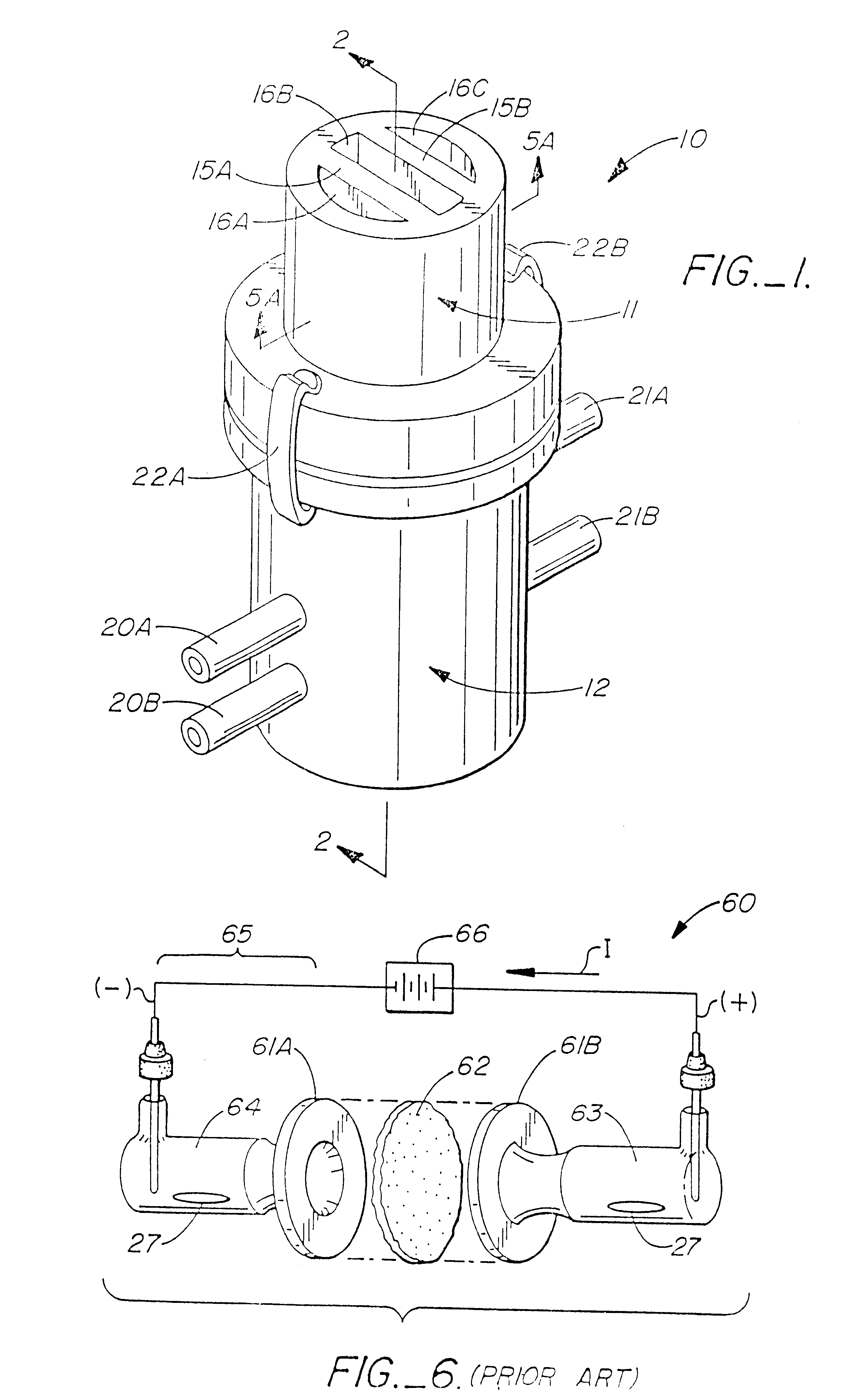Method for the iontophoretic non-invasive determination of the in vivo concentration level of an inorganic or organic substance
a technology of inorganic or organic substances and concentration levels, which is applied in the field of iontophoretic non-invasive determination of the in vivo concentration level of an inorganic or organic substance, can solve the problems of inability to investigate side-by-side, inability to use side-by-side cell design, and inability to be side-by-sid
- Summary
- Abstract
- Description
- Claims
- Application Information
AI Technical Summary
Problems solved by technology
Method used
Image
Examples
example 1
In Vitro Sampling
Testing of the Modeling Cell: Glass diffusion cells as described above (see FIG. 1, 2, 3 or 4) were made by Skin Permeation Systems (L. G. A., Berkeley, Calif.). The cell 10 is a modification of a standard flow-through diffusion cell (LGA skin penetration cell catalog no. LG 1084-MPC), described by Gummer et al., International Journal of Pharmacology, Vol. 40, p. 101 ff, published in 1987.
The top half of the cell is divided into three compartments or chambers (16A, 16B or 16C) by two walls 15A and 15B so that the only physical / electrical connection between the two electrode chambers. (16A and 16C in FIG. 1, 2, 3 or 4) decreases the possibility of leakage between them and makes it possible to investigate questions involving skin continuity. The top half of the cell 12 has a channel 18 or trough below this space that isolates the skin from the rest of the receptor phase. Filling this channel 18 with receptor fluid 19 during an experiment keeps the skin above it moist....
example 2
Iontophoretic Sampling In Vitro
Iontophoretic sampling consists of pulling out chemical substances from the body through the skin by means of electricity. In order to test this method, an iontophoretic in-vitro cell is used (FIG. 1, 2, 3 or 4). Full-thickness hairless mouse skin 13. (8-13 weeks old) is placed between the two parts of the cell. Solutions of radiolabelled drugs of known concentration in phosphate-buffered saline are circulated 10 ml / hr. beneath the skin. On top of the skin there are two self-adhesive gel electrodes, connected to a power supply which is set up in constant current mode (0.5 mA). Current is applied for measured length of time (about 2 hr.) corresponding to about 0.63 mA / cm.sup.2. After the experiment the gel electrodes are taken for scintillation counting, which reflects the amount of drug absorbed by the gel electrodes. Using different drug concentrations with the same electrical current for the same period of time, a linear correlation between the amoun...
PUM
 Login to View More
Login to View More Abstract
Description
Claims
Application Information
 Login to View More
Login to View More - R&D
- Intellectual Property
- Life Sciences
- Materials
- Tech Scout
- Unparalleled Data Quality
- Higher Quality Content
- 60% Fewer Hallucinations
Browse by: Latest US Patents, China's latest patents, Technical Efficacy Thesaurus, Application Domain, Technology Topic, Popular Technical Reports.
© 2025 PatSnap. All rights reserved.Legal|Privacy policy|Modern Slavery Act Transparency Statement|Sitemap|About US| Contact US: help@patsnap.com



